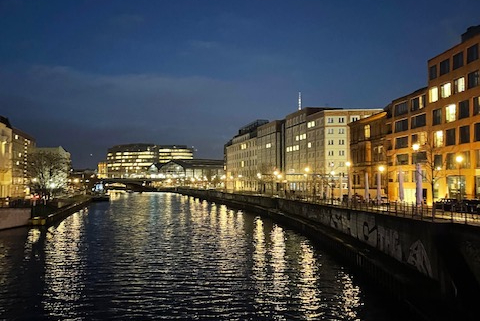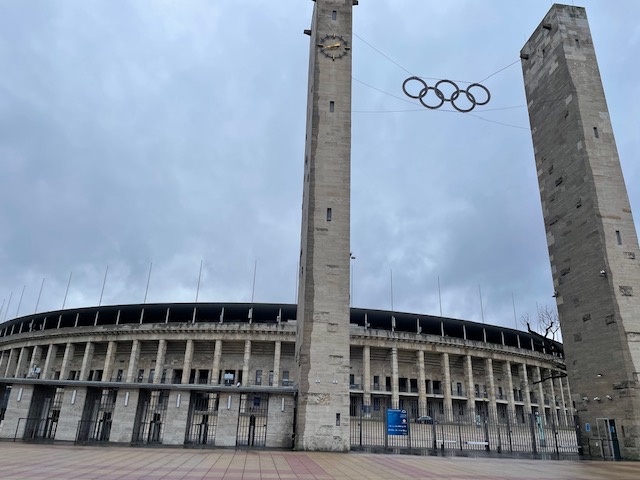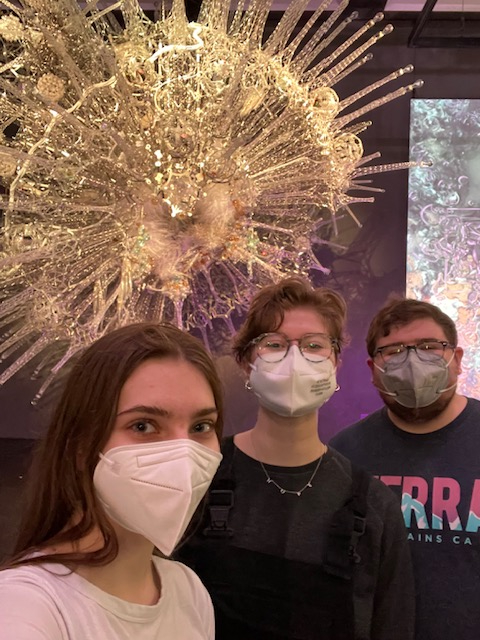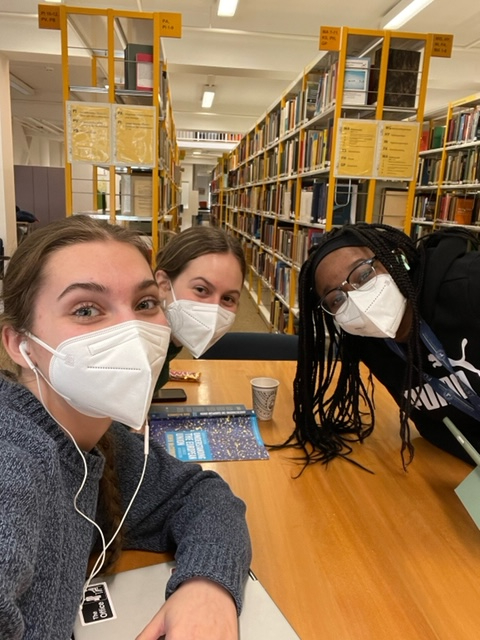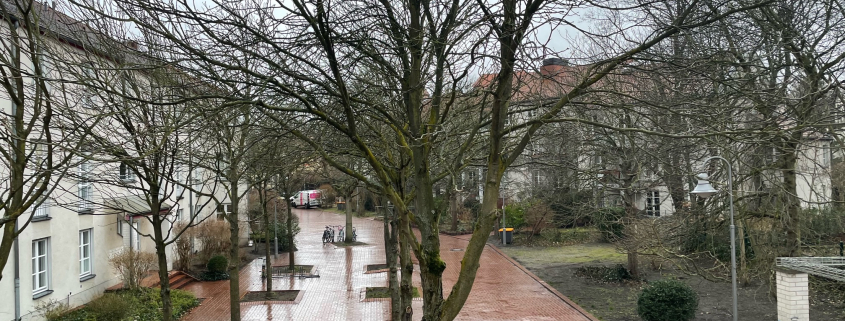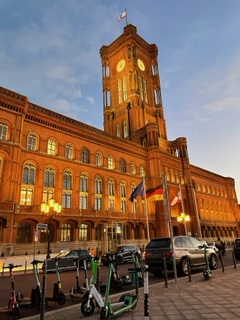Putting the Study in Study Abroad
/in London 2022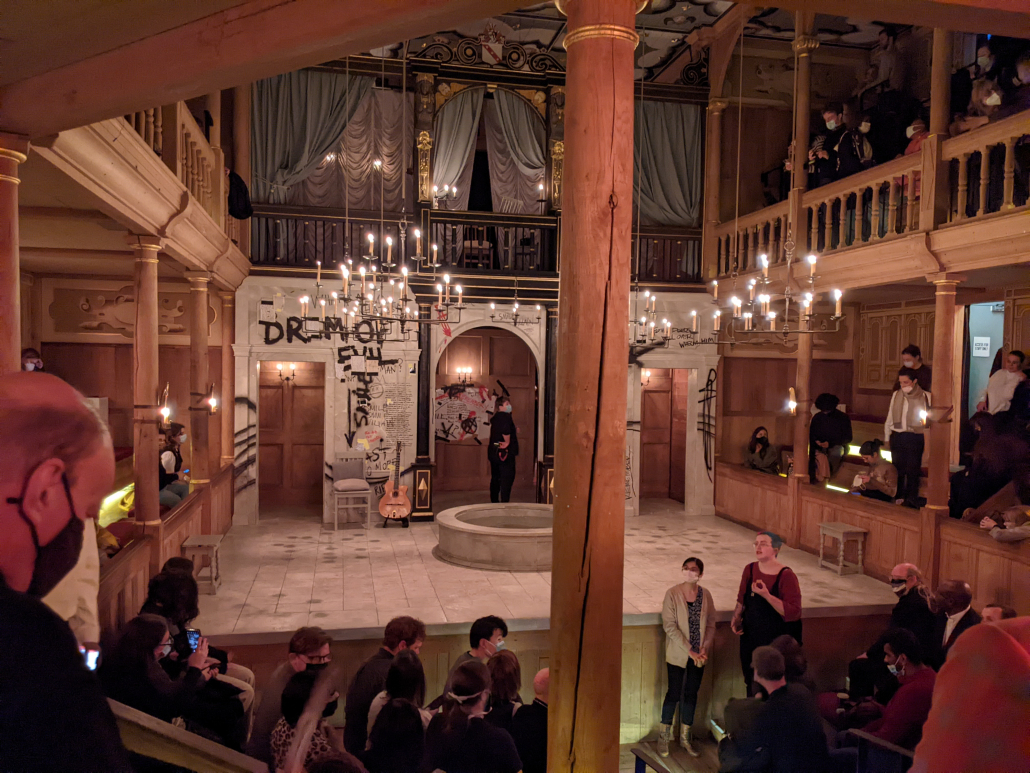
Academics in England are very different from my previous college experience. I am currently taking three classes, and a month and a half in, I still haven’t had any graded assignments. At MLC, our grades are made up of numerous small daily assignments and projects, as well as a midterm and a final. This means that I have at least a couple of hours of homework per day. In the UK and most of Europe, grades are calculated based on only a few assignments. Sometimes there is only one: a final exam. Because I am taking all literature classes, I have one big essay due at the end of the semester for each class. The only daily assignments I have are assigned readings, and we are expected to do our own supplementary readings to be ready to discuss in class.
So far, I am very much enjoying this format. As a study abroad student, I don’t want to spend a lot of time doing homework, so I am fine with not having so many daily assignments. There is also a lot of freedom in what I can focus on with my reading. Besides the core text, I can read critical sources that I am interested in and take it where I want it to go.
UK students that I have spoken to seem to find it strange that American universities require so many more daily assignments. From their point of view, college students are adults, and they shouldn’t need to be babied and monitored as much as high schoolers would. For the most part, I agree. However, I can see how some students find it really hard to be motivated when there is so little structure.
Another difference is my class schedule. Fortunately, my classes are almost entirely in person. Unlike my classes in the US, which met twice or three times per week for fifty minutes, my classes here meet only once per week. My classes last two or three hours. It was definitely an adjustment! We usually get a coffee break in the middle, but by the end, it can get a little hard to focus.
My three classes are Victorian Literature, Classical Children’s Literature, and Shakespeare. My favorite is definitely my Shakespeare class because it includes outings to live performances of the plays we are studying. We discuss the staging, costumes, and creative choices as well as the text itself. It feels like a theatre class mixed with a literature class.
I always get the question: Which is harder? US or UK college? It’s hard to compare the two because they are so different, but I think that US college is harder. However, this doesn’t mean that it is better or I learn more. Time management is definitely harder and the workload is much heavier. But I am astounded by how much I have learned already in my UK classes even with the lack of daily work.
A happy coincidence is that seeing such a different system has opened my eyes and given me lots of ideas for my future classroom. Each person has their own structure that they prefer, but learning can happen either way.
Balancing Life and School
/in Berlin Spring 2022 Academics and university life is much different in Germany than in America. I am currently taking two classes from MLC and two from FU-BEST. The ones I am taking here are Intensive German B2/B3 and Art and Dictatorship. There are not many classes targeted towards teaching because many of the students are going into Economics, Law, Political Science, or Art. Even though I am not taking any teaching theory classes, I hope to be able to learn something from how the teachers here teach. You are not allowed to use your computer for notes in class unless you have a learning disability. I never use my computer at school, and I only use it for homework. For German, all my homework and notes are on paper. For my Art class, all of my notes are on paper, and my assignments are online.
We have Art and Dictatorship only once a week for three hours. On the first day of class, I learned something that really stressed me out at first. Our teacher makes our assignments very open-ended, in the sense that we don’t have a rubric or any specific requirements besides formatting. For reading responses, he lets us write whatever we want and for our presentations as long as it fits under the topic title. I am doing my first presentation tonight (2/22/22). The teachers do not like just having us stand up front and talk; they like us to have interactive elements, which makes it much more enjoyable for the audience and the presenter.
My German class is very intense. We meet four days a week for three hours each day. All of the class is spoken in German, and we have a lot of discussions. This is especially challenging for me because I’m not great at speaking German, but it is definitely helping me grow. We have to write a paper and do two presentations in German. My first one is this Thursday (2/24/22). I am hoping to come out of this class as a more well-rounded German speaker.
Classes here also have a lot of days when we spend the class period at a historic site or a museum. I have gone on an excursion to the Musée Futurium for my German class. I have an excursion to the Jewish Museum in Berlin and Topography of Terror next week for my Art and Dictatorship class. It also may seem that three hours is a long time to have class, but we get a fifteen-minute break halfway through German, and we get a ten-minute break every thirty minutes for my Art and Dictatorship class. During these breaks, we open the windows, talk, walk around outside; many people smoke or get coffee from a vending machine or the cafeteria (Mensa). After classes, no one hangs around campus. One of the directors of FU-BEST told us the general attitude towards school is more like going to work and leaving rather than hanging around and living on campus. The library closes at 4 pm every day, so my friends and I study on Tuesdays in between classes there. After classes, there is nothing really to do on campus, so we either go to a coffee shop to study or head back to our apartments. It is nice to go home at 12 almost every day. I have started going to bakeries to pick up something for my lunch on my way to my apartment. I have to study for a few hours, and then I’m done with my school stuff for the day. It feels like I am barely in school here, which makes it easy to be flexible with my days. I definitely feel very free with how I balance my life and school.
2. This is me and some friends from my German class on an excursion to the Futurium.
3. This is me and my friends spending time in the library in between our Tuesday morning and evening classes.
My flat
/in London 2022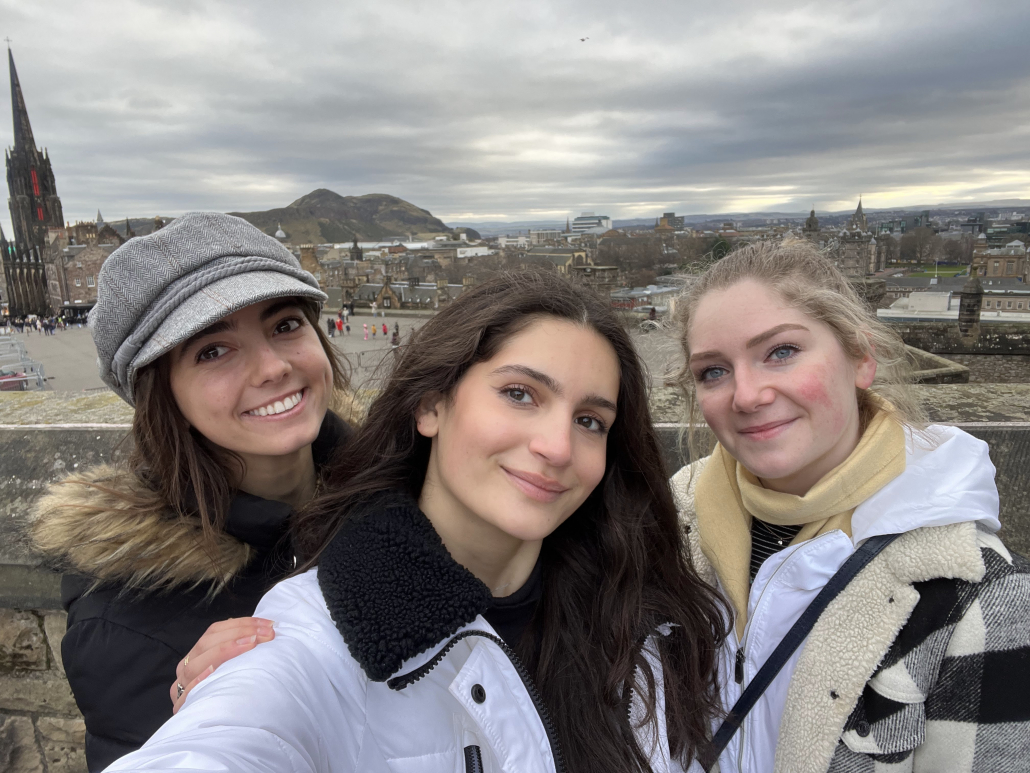
University accommodation in the United Kingdom is very different from what I am used to. I live in a flat with 5 other study abroad students. We share a kitchen and a bathroom, but all have our own separate bedrooms. The common areas in our flat are cleaned each day and deep cleaned once a week. I am lucky in that my accommodation is on campus; most days my walk to class is only about 5 minutes. I’m told that at most of the bigger universities in London, student may have to commute up to 40 minutes for their classes!
The best part about our flat is the people in it. 4 of us are from various places around the United States, one is from Puerto Rico, and one is from Ecuador. We get along extremely well. All being study abroad students, I think we automatically have similar goals. I always have someone to explore the city with or just to talk if it gets hard. We all know exactly what each other are going through. At first, I was disappointed that I wasn’t with local students, but now I’m glad. I want to meet Brits, of course, but living with them would have been difficult.
Having shared a room my whole life, I was apprehensive about being alone in my own room, but I really love it. It is small, which makes it cozy, and more than big enough for all my stuff. A big difference is that I have a sink in my room. I don’t know why this isn’t standard at American universities, because it is a total game changer. I can wash my hands, fill my water bottle, and even wash my hair without leaving my room!
Some of my flatmates were a bit put off at first by our living conditions. The rooms are clean, but very much not new. They have obviously been lived in by many other students before us. Since all the buildings are so old here, they are not as nice as we are used to, but they have their own charm. We did our best to make it feel like home. We are responsible for buying our own toilet paper, dish soap, dish towels, and other things. This was a bit of a shock at first when we arrived, but we soon created a system to make sure we contribute equally.
By far the biggest difference in the way I am living in London versus the way I lived at MLC is the food. Here, I do all my own grocery shopping and cooking. A meal plan that applies to the various cafés on campus is available, but it really isn’t worth the money. Plus, I love to cook! It has been such an adventure figuring out what to buy and what I can make that both tastes good and is healthy. So far the stars are pasta and frozen veggie burgers. My favorite part of the day is around 6 or 7 pm when all my flatmates find their way to the kitchen to make dinner. We end up sticking around in there for hours: eating, playing cards, and talking about our days. I feel like a part of a family.
She goes to Germany and speaks…Spanish?
/in Berlin Spring 2022I tragically do not live in the picturesque part of Berlin. I live on a bustling street, but if I go walking out the back of the apartment(as shown in the picture), there are many beautiful German homes. I guess now is the time to note that I live above an Italian restaurant. However, my host has told me never to eat from there because it is too expensive. My host mom, or Gastmutter in German, is from Mexico. She speaks a little English but mostly Spanish and German. Because I am not very confident in German, we mainly speak Spanish. Ironic that I am in Germany, and I ended up being able to speak so much Spanish. I have only had one major miscommunication. I accidentally indicated that my parents lived in two different places and were divorced. When she asked if my mom had anyone new, I quickly cleared everything up!!! I have started classes now, and we will be speaking more German. My host provides me with breakfast and cooks my supper. She says you have to cook at least an hour to get anything good, and so far, everything has been fantastic. I told myself I would get in shape while I was in Germany, but my host insists that I eat more and more food, so I don’t think that will be happening anymore. My host is amazing, and she took me to the grocery store the other day, and it was so different. There were stands with so much fresh food and a very extensive bakery. My host says she goes grocery shopping several times a week so that no food goes to waste and it is always fresh. She also does not have a car, which is common in Germany, so doing the big American food hauls is not realistic. The apartment is really nice, and I like my room a lot. The bathroom has a towel warmer. It also does not have a fan, so you have to open the window for 15 minutes after someone showers. I also open the windows in my room very often so let in the fresh air. This is no problem because of how moderate the temperature is in Germany. All you have to watch out for is the dreaded rain. Everything is smaller in the kitchen. From the cups to the refrigerator and dishwasher, I feel ever so slightly like a giant. My host does my laundry for me, but it is normal for a house not to have a dryer, so we hang dry everything. One thing that has been difficult is knowing how much time to spend with my host. She is usually very busy, so I don’t see her until 5 pm. I have homework in the evenings, and I need to call my fiance, so I’m still figuring it out. She is very respectful of my space, so she is really considerate. I am getting more comfortable in my new environment. I’m no longer anxious when I leave the apartment, so slowly but surely, I am adapting. At some point, while I am here, I want to bake for her. Because there are so many bakeries, I don’t think many people do a lot of baking themselves. However, maybe you will see it in a future blog post!.
Culture Shock In Germany
/in Berlin Spring 2022I have been in Germany for almost a week and it has been very interesting. There is a lot that has shocked me about being here. I knew bicycles were very popular but there is a specific part of the sidewalk just for bikes! If you go to a restaurant or in public and you need to use the bathroom it doesn’t matter if you are a customer or not, you have to pay to use the bathroom. It is usually around 50 cents or a euro. I was told that in Germany many places only accept cash but since I’ve been here I have been able to pay for everything with my credit card. This is good because credit cards are the way to get the best exchange rate. One thing that is very different for me is using public transportation to get everywhere. It takes me an hour to get to my university and that is very normal. It takes around 45 minutes to get almost anywhere because Berlin is so big. The sunsets around 5 pm and I am often out past sunset for orientation activities and so far, I’ve learned that because almost everyone uses public transportation it is very safe even when it is dark to take the U-Bahns (subways), S-Bahns (mix of a bus and a train) and buses. All of the forms of public transport are also very clean because everyone takes them. One thing that is difficult for me is to live in such an urban environment. I haven’t experienced so much noise and closeness of buildings before so that has been one difficult thing to adjust to. I did go on an adventure with some friends to Alexanderplatz and I found that because of Berlin getting split into four sections, it has many different types of architecture and areas. I felt very comfortable in Alexanderplatz. The weather is much cloudier and rainier than I expected. I did know it would be around 40 degrees Fahrenheit, but I didn’t expect it to rain every day. Because it is warmer, when it doesn’t rain, everyone opens their windows. I had mine open almost all day until the rain got in my room. I bought groceries yesterday, and I forgot that if you want bags for your groceries or for anything in stores you have to buy them or bring your own. I have talked with my host a lot and she told me that teachers are paid well in Germany! Maybe I will teach in Germany. Haha! She also told me you have to pay a tax to be religious. That shocked me. I know the government supports churches, but I’m not sure if people give offerings or not on top of that tax. Another thing that has shocked me is the attitude towards non-sexual nudity in media. The language barrier has been difficult but it is interesting to see that many people in Germany speak around three languages. My host speaks some English and is fluent in Spanish and German. This blog has been pretty scattered, kinda like my brain. I am already starting to adjust more and more to being in Germany and I can’t wait to start classes!

